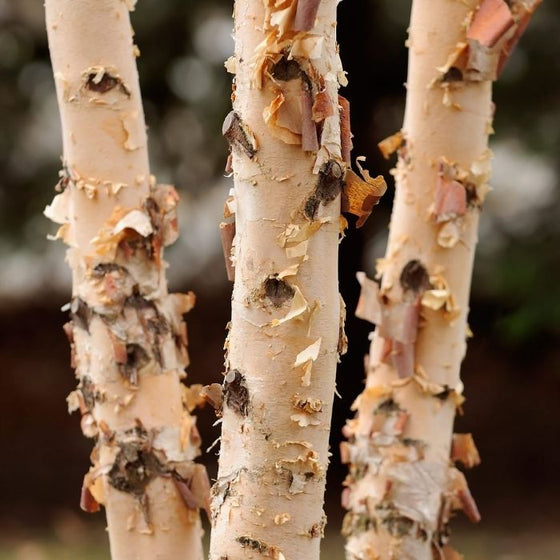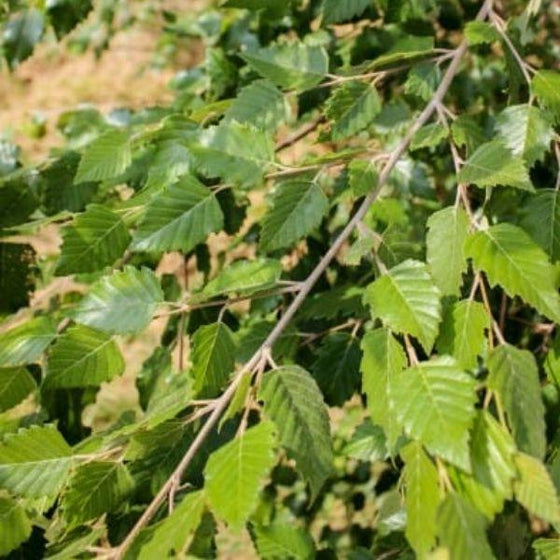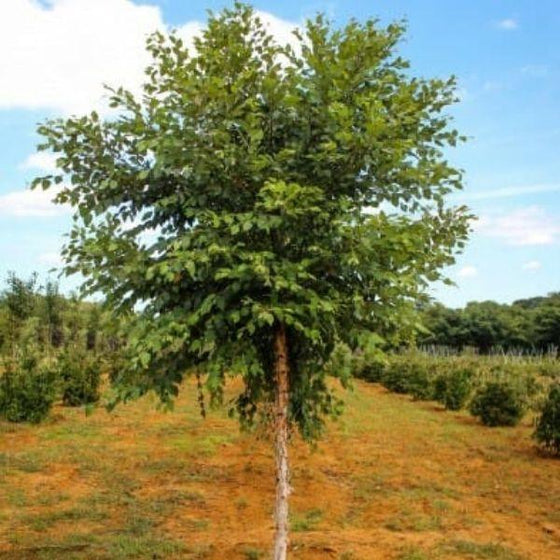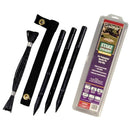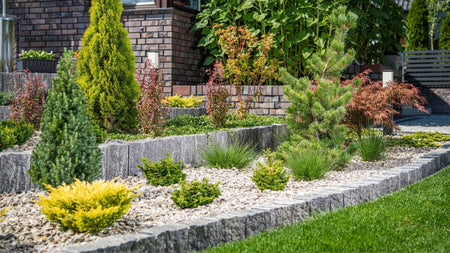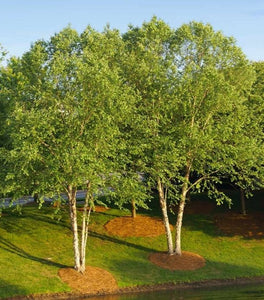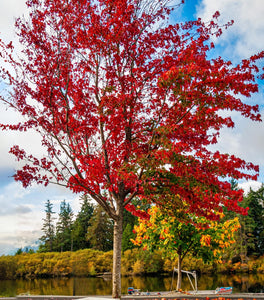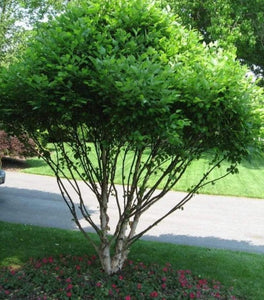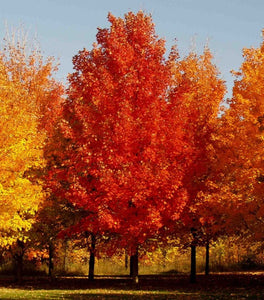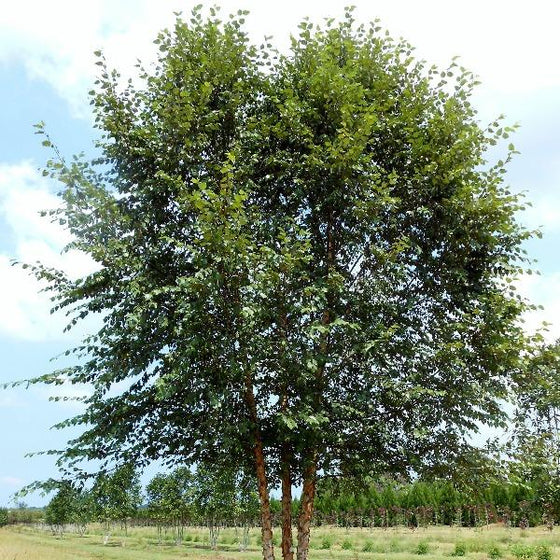
Images Depict Mature Plants
Dura Heat Birch Trees
The Dura Heat® River Birch (Betula nigra 'BNMTF') is a standout native tree known for its exceptional heat tolerance, compact size, and stunning exfoliating bark. Unlike traditional river birches, this cultivated variety boasts superior resistance to heat stress and drought, making it ideal for southern landscapes or urban environments. Its distinctive creamy-peach and cinnamon-colored bark peels gracefully to reveal new layers, adding four-season interest and unique texture to gardens and yards.
This fast-growing, deciduous tree matures to a manageable height of 30 to 40 feet with a rounded, multi-stemmed or single-trunked form. Its deep green, glossy foliage turns golden yellow in fall, offering a beautiful seasonal transition. Dura Heat River Birch thrives in moist, well-drained soils and adapts well to clay, loam, or sandy conditions, making it a popular choice for rain gardens, streambanks, and low-lying areas. It’s also highly valued for its resistance to pests and diseases, including birch borer.
Perfect for residential landscapes, parks, and large garden beds, the Dura Heat River Birch provides quick shade, erosion control, and a natural look that complements both native and ornamental plantings. Its ability to tolerate full sun, wet soils, and drought once established makes it a resilient, low-maintenance addition to any landscape. Whether used as a specimen tree or in groupings, this versatile, eye-catching native brings year-round appeal and ecological benefits to your garden.
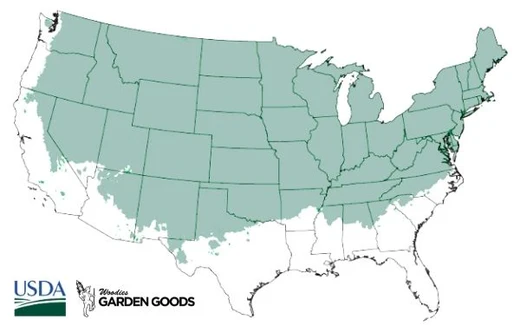
| Hardiness Zone: | 4-9 |
|---|---|
| Mature Height: | 30 to 35 feet |
| Mature Width: | 25 to 30 feet |
| Classification: | Broad Leaved deciduous tree, Shade Tree |
| Sunlight: | Full Sun |
| Habit: | Upright, Vase Shaped |
| Foliage: | Glossy Green, Butter Yellow fall color |
| Flower Color: | Inconspicuous |
| Pruning Season: | No pruning needed |
| Soil Condition: | Any well drained soil |
| Water Requirements: | Water well until established |
| Uses: | Tolerates moist soil and full sun. Will adapt to drier sites |
How to Care for Dura Heat River Birch
Be sure to read our planting instructions to ensure a healthy and happy Dura Heat Birch Trees for years to come!
How Do I Plant my Dura Heat River Birch Trees?
To plant your Dura Heat River Birch Tree, begin by selecting a site with full sun to partial shade and moist, well-drained soil. This heat-tolerant birch variety performs best in locations with consistent moisture but can adapt to clay or sandy soils as long as drainage is adequate. Dig a hole twice as wide and as deep as the root ball, then position the tree so the top of the root ball is level with the surrounding soil. Backfill with native soil, firming gently to eliminate air pockets, and water deeply after planting to help establish strong roots. After planting, apply a 2- to 3-inch layer of mulch around the base of the tree, taking care to keep it a few inches away from the trunk to prevent rot. This mulch layer will help retain soil moisture and regulate temperature, especially during the tree’s establishment phase. Staking is not typically required, but may be used in windy areas for extra support. With proper planting and early care, your Dura Heat River Birch will quickly establish and begin providing fast-growing shade, striking bark texture, and vibrant foliage to your landscape.
How Do I water my Dura Heat River Birch Trees?
Watering your Dura Heat River Birch Tree properly is essential for healthy establishment and long-term growth. During the first one to two years after planting, provide deep, consistent watering at least once or twice a week, depending on weather and soil conditions. Aim to keep the soil evenly moist but not waterlogged, especially during hot or dry periods. A slow, deep soak encourages deep root development and helps the tree become more drought-tolerant over time. Once established, Dura Heat River Birch trees are more resilient and can tolerate occasional drought, but they still prefer moderate soil moisture for optimal health and appearance. Mulching around the base will help retain soil moisture and reduce the need for frequent watering. During extended dry spells or periods of extreme heat, supplemental watering will support continued vigor, vibrant foliage, and healthy bark exfoliation.
How Do I fertilize my Dura Heat River Birch Trees?
To fertilize your Dura Heat River Birch Tree, begin by applying a slow-release, balanced fertilizer in early spring, just as new growth begins to emerge. Look for a formula such as 10-10-10 or 14-14-14, which supplies equal parts nitrogen, phosphorus, and potassium to support both root development and lush foliage. Spread the fertilizer evenly around the tree’s root zone, avoiding direct contact with the trunk, and water thoroughly after application to help nutrients reach the root system. For established trees, one application per year is typically sufficient to maintain vigor and promote healthy growth. If your tree is growing in poor soil or showing signs of nutrient deficiency—such as yellowing leaves or stunted growth—consider conducting a soil test to determine specific nutrient needs. Avoid over-fertilizing, as excessive nitrogen can lead to weak growth and reduce the tree’s natural pest resistance. With proper fertilization, your Dura Heat River Birch will thrive with vibrant foliage, strong limbs, and beautiful exfoliating bark year after year.

How and When Should I prune my Dura Heat River Birch Trees?
Pruning your Dura Heat River Birch Tree should be done during the late fall or winter months, when the tree is dormant and sap flow is minimal. This timing helps prevent the tree from “bleeding,” which is common in birches if pruned in spring. Begin by removing any dead, diseased, or crossing branches, as well as any suckers growing at the base of the tree. Focus on maintaining the tree’s natural shape and structure, which is typically a multi-stemmed form that adds beauty and balance to the landscape. When pruning, use clean, sharp tools to make clean cuts just outside the branch collar to promote proper healing. Avoid removing more than 25% of the canopy in a single season, as excessive pruning can stress the tree and reduce its natural vigor. Annual light pruning helps enhance airflow through the canopy, reduces the risk of disease, and maintains a neat, attractive appearance. With thoughtful, seasonal pruning, your Dura Heat River Birch will continue to deliver exfoliating bark, graceful branches, and vibrant foliage for years to come.

